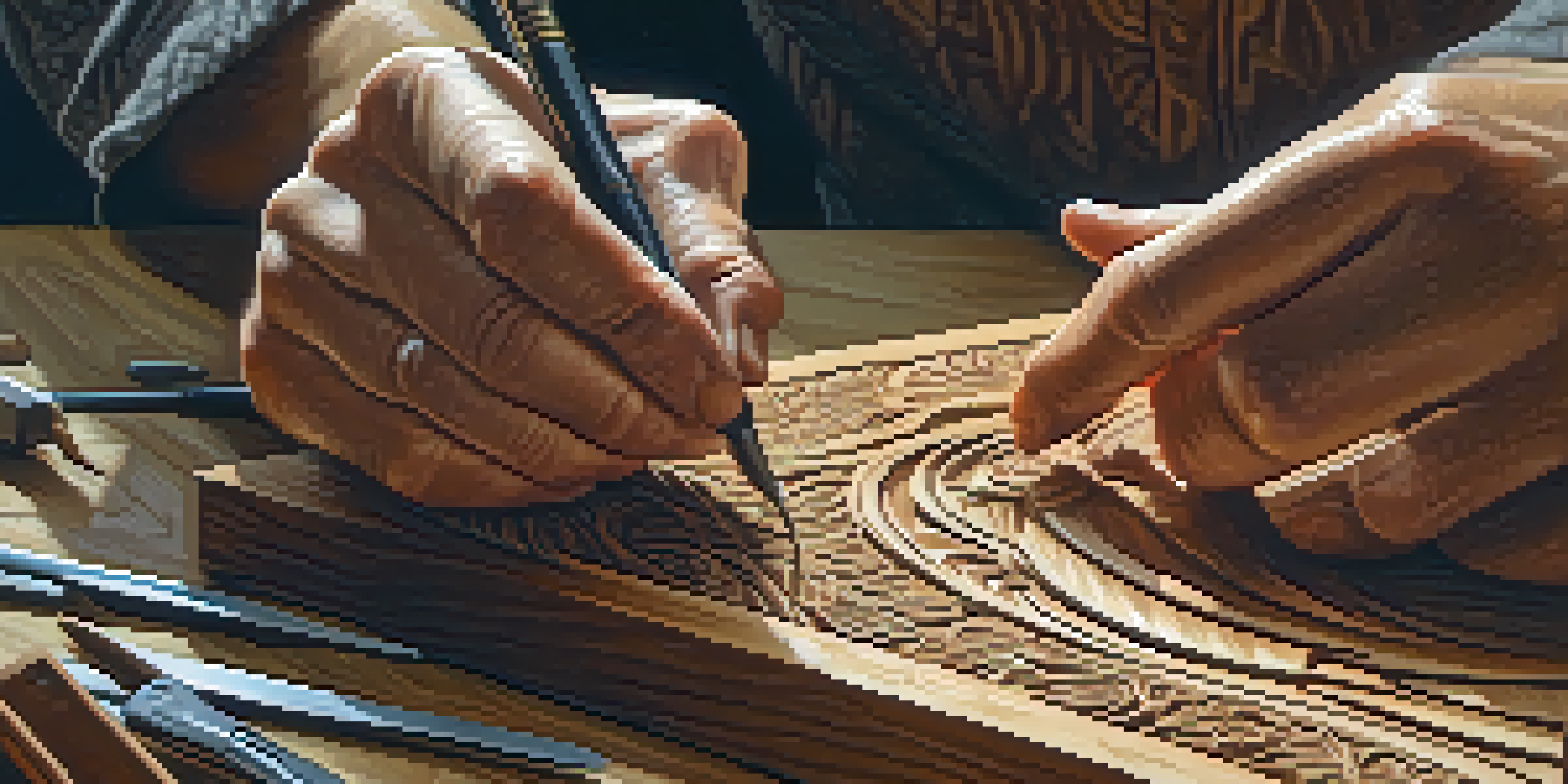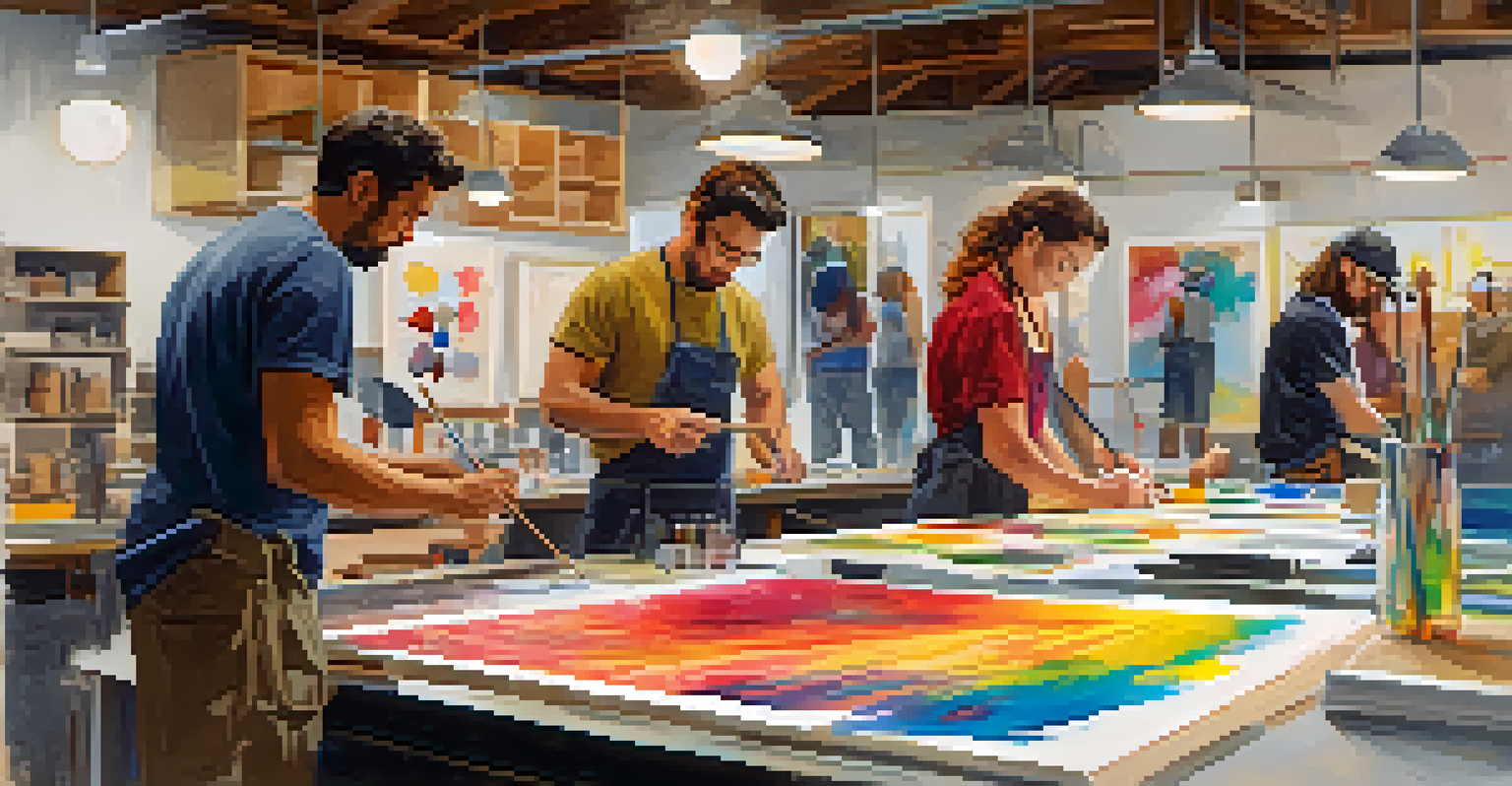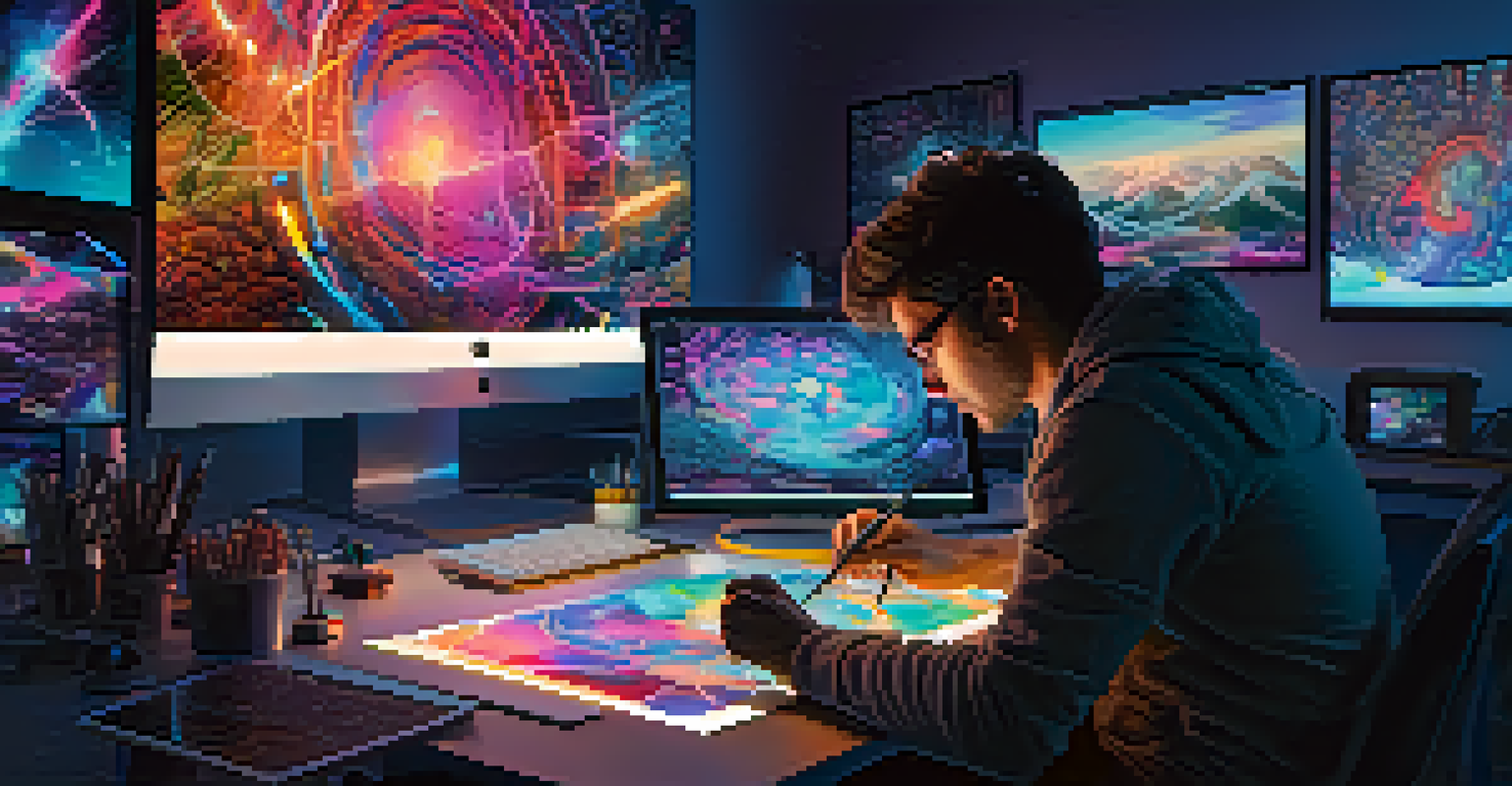The Evolution of Carving Techniques in Graphic Illustrations

Understanding the Origins of Carving Techniques
Carving techniques date back to ancient times, when artists used rudimentary tools to etch designs into various surfaces. These early methods laid the foundation for what would become a rich tradition in graphic arts. Just as cave paintings told stories, carving allowed artists to leave their mark in a more permanent way. Over time, different cultures adopted and adapted these techniques, each adding their unique flair.
Art is not freedom from discipline, but disciplined freedom.
For example, the Egyptians developed intricate stone carvings that not only served aesthetic purposes but also held spiritual significance. Similarly, the Chinese perfected woodblock printing, which utilized carved wood to create stunning illustrations. These historical practices highlight how carving was more than just an artistic expression—it was a means of communication and preservation of culture.
As we move forward in time, the evolution of these techniques reflects broader changes in technology and artistic styles. From early chiseling methods to modern digital carving tools, the journey reveals how artists have continuously innovated while staying connected to their roots.
The Rise of Woodblock Printing and Its Impact
Woodblock printing emerged in East Asia during the 7th century and revolutionized the way illustrations were produced. This technique involved carving an image into a wooden block, inking it, and then pressing it onto paper. It allowed for the mass reproduction of illustrations, making art more accessible to the public. Imagine being able to share your artwork with thousands without having to recreate it each time—that's what woodblock printing offered!

The introduction of this technique had a profound influence on graphic illustrations, giving rise to new styles and movements. Artists could experiment with different designs while maintaining consistency, leading to a flourishing of artistic expression. Additionally, this method paved the way for the illustrated books of the Renaissance, which combined literature and art in a captivating manner.
Carving Techniques Evolve Over Time
From ancient stone carvings to modern digital tools, carving techniques have continuously adapted, reflecting cultural and technological changes.
As the popularity of woodblock printing grew, it inspired a wave of innovation in other regions, including Europe. Artists began to adopt and adapt these techniques, leading to the creation of unique styles that reflected their cultural identities. The result was a rich tapestry of graphic illustrations that showcased the beauty of diversity.
The Transition to Engraving and Etching
As the demand for detailed illustrations increased, artists began exploring engraving and etching techniques. Engraving involves carving an image into a metal plate, while etching uses acid to create designs on a treated surface. Both methods allowed for finer lines and more intricate details compared to woodblock printing. This transition marked a significant shift in the quality and complexity of graphic illustrations.
The best artist has no conception that a marble block does not contain within itself; the best artist knows how to carve it out.
Artists like Albrecht Dürer became renowned for their engravings, which captured the nuances of human expression and the natural world. The ability to create multiple copies of a finely detailed image opened new doors for artists, enabling them to reach wider audiences. This shift not only elevated the art form but also influenced other disciplines, such as scientific illustrations.
The precision of engraving and etching also allowed for the blending of art and science, as detailed illustrations became essential for documenting discoveries. This marriage of disciplines showcased how graphic illustrations evolved beyond mere decoration, becoming vital tools for education and communication.
The Advent of Lithography and Its Innovations
Lithography emerged in the late 18th century as another groundbreaking technique that transformed graphic illustrations. Unlike engraving, lithography relies on the principle of oil and water repelling each other, allowing artists to draw directly onto a flat stone or metal plate. This method enabled for faster production and greater flexibility in design, making it a favorite among illustrators.
The ease of reproducing images with lithography led to a boom in illustrated materials, including newspapers, posters, and books. Artists could quickly bring their visions to life, and this accessibility encouraged experimentation with styles and themes. Imagine being able to create vibrant posters overnight—lithography made that possible!
Woodblock Printing Revolutionizes Art
The emergence of woodblock printing in East Asia allowed for mass reproduction of illustrations, making art more accessible and inspiring diverse artistic expressions.
Furthermore, lithography played a crucial role in the democratization of art, allowing for a wider distribution of artistic works. It broke down barriers between artists and the public, fostering a deeper appreciation for graphic illustrations and their impact on society. This evolution set the stage for future advancements in printmaking.
The Influence of Digital Technology on Carving Techniques
With the rise of digital technology in the late 20th century, traditional carving techniques began to merge with innovative digital tools. Software programs now allow artists to create intricate designs without ever touching a physical medium. This shift has opened up exciting possibilities, making carving techniques more accessible to a new generation of graphic illustrators.
Digital carving mimics traditional methods while introducing unique features like undo options and layering. Artists can experiment freely, adjusting designs with a click rather than a chisel. This flexibility encourages creativity, enabling artists to push boundaries and explore new styles that were once difficult to achieve.
Moreover, digital technologies have also democratized the field further, allowing anyone with a computer to try their hand at graphic illustrations. Online platforms provide access to tutorials and resources, fostering a community of aspiring artists eager to explore the evolution of carving techniques.
The Return to Traditional Techniques in Modern Art
Despite the advancements in digital carving, there's been a notable resurgence of interest in traditional techniques among contemporary artists. Many seek to reconnect with the tactile experience of carving, appreciating the depth and texture that physical materials provide. This return to traditional methods highlights a desire for authenticity in an increasingly digital world.
Artists often blend traditional and modern techniques, creating unique hybrid artworks that celebrate the best of both worlds. For instance, an artist might start with a digital design, then transfer it to wood or metal for carving, adding a personal touch that resonates with viewers. This fusion not only honors history but also showcases innovation and creativity.
Digital Tools Enhance Carving Artistry
Digital technology has transformed traditional carving methods, enabling artists to experiment and innovate while fostering a new generation of graphic illustrators.
The revival of traditional carving techniques also speaks to a broader cultural movement that values craftsmanship and artisanal methods. As more people embrace handmade goods and unique art forms, the significance of these techniques continues to grow, ensuring they remain relevant in contemporary graphic illustrations.
The Future of Carving Techniques in Graphic Illustrations
Looking ahead, the future of carving techniques in graphic illustrations promises to be an exciting blend of tradition and technology. As new tools and materials emerge, artists will continue to experiment and redefine the boundaries of their craft. The integration of augmented reality and 3D printing, for example, opens up new dimensions for illustrators to explore.
Artists may find themselves using digital tools to prototype designs before committing to traditional carving, allowing for a more efficient creative process. This interplay between methods will likely foster even more innovative approaches, leading to fresh styles and techniques that challenge our perceptions of art.

Ultimately, the evolution of carving techniques in graphic illustrations reflects a broader narrative of artistic growth and exploration. As artists continue to adapt and innovate, the legacy of these techniques will endure, inspiring future generations to carve their own paths in the world of graphic art.